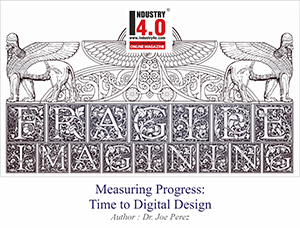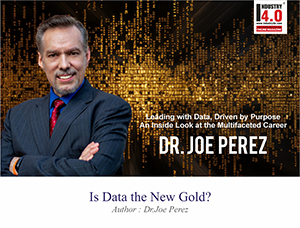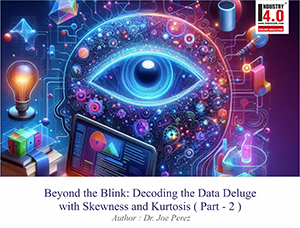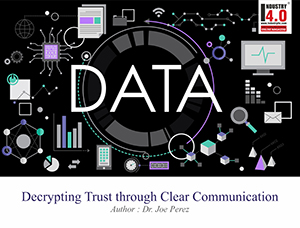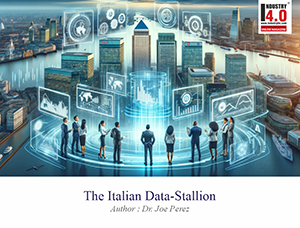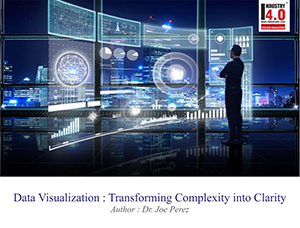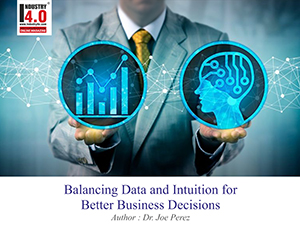The Dance of DATA : Missteps & Misinterpretations
When Perceived Failure Becomes Lasting Success
The Moscow premiere of Swan Lake in 1877 was a failure. The grand music of Pyotr Ilyich Tchaikovsky, now acknowledged as among the greatest of all ballet compositions, was “overwhelming” to choreographer Julius Reisinger, whose production could not meet its demands. Contributing to the issue was the eleventh-hour replacement of the principal ballerina, which sidetracked expectations. The play was dismissed by critics and audiences alike as a flop. It wasn’t until decades later, long after Tchaikovsky’s death, that the new version choreographed by Marius Petipa and Lev Ivanov earned Swan Lake the recognition it truly deserved. A humiliating defeat was transformed into one of the most famous works of art of all time.
This story might seem far removed from data analytics, yet it carries a deeper truth: True success, whether in the arts or in analytics, largely depends on point of view, timing, and interpretation. Much in the same way that Swan Lake would only be lovely and enjoyable with the right context and partnership, data analytics initiatives also require the right alignment in order to be successful. Sometimes what may seem like a failure is only a stepping stone to success—or conversely, seeming success may often hide long-term issues.
Let’s take a look at how the lessons of Swan Lake apply to data analytics through discussion of real-world examples, the importance of context, and how organizations can turn seeming failures into revolutionary successes.
The Dance of Data: Missteps and Misinterpretations
In data analysis, miscalibration of expectations, execution, and interpretation can lead to outcomes that, upon first glance, are failures. Just as in the debut of Swan Lake, when choreography failed to do justice to the music of Tchaikovsky, analytics groups often fail to align the data that they collect with the expectations of stakeholders.
Look at the infamous case of Target’s predictive analytics platform; a story that has become quite a cautionary tale for today. In the early 2010s, Target built a complex algorithm that could predict when customers were expecting babies by monitoring their shopping behavior. The program worked so well that it alerted a teenager’s pregnancy before her family knew, causing an embarrassing and highly publicized incident when the company sent maternity-related coupons to her residence. While the analytics itself was accurate (thus making it a technical success), the lack of sensitivity to social context made the effort an ethical and reputational failure.
But was it truly a failure? Looking back, Target’s analytics initiative demonstrated the revolutionary potential of predictive modeling. The firm learned to refine its strategy, being more diligent to mix personalized recommendations with mass marketing initiatives to avoid jarring shoppers. Today, Target is a customer analytics powerhouse, illustrating how a public failure can be a precursor to triumph.
When Success Masks Failure
While perceived failures can turn into successes, the opposite is also possible: seemingly successful outcomes in data analytics can hide underlying problems. The Enron collapse in the early 2000s is still one of the most notorious corporate failures in history. Enron was praised for its creative application of data and financial modeling, which enabled the firm to record impressive earnings and draw investor trust. The company’s analytics at the time appeared to be a success.
But as subsequent investigations showed, Enron‘s models were constructed on falsified data and misleading tactics. What looked like state-of-the-art analytics was actually a house of cards, ready to collapse at the slightest breeze. This is a reminder that success in analytics must be based on transparency, accuracy, and ethical considerations. Without these three stable foundations, even the most dazzling results can have disastrous outcomes.
The Swan Lake Principle: Going Beyond Analytics to Art
So how can organizations ensure that their analytics efforts follow the trajectory of Swan Lake, moving forward from mistakes into masterpieces, rather than following the tragic failure of Enron? The key lies in embracing the following principles:
- Cooperation and Alignment
Just as the original Swan Lake did not have harmony between choreographer and composer, analytics teams must work closely with business stakeholders so that goals, approaches, and expectations are aligned. This ensures insights are actionable and can be implemented.
- Iteration and Adaptation
The 1895 revival of Swan Lake succeeded because Petipa and Ivanov reworked the choreography to fit Tchaikovsky’s music. Similarly, analytics projects must embrace iteration, using feedback and changing conditions to refine models and approaches.
- Context is King
Data does not exist in a vacuum. As the Target example illustrates, success with technology can fail if social and ethical context are not examined thoroughly enough. Analytics groups must not only ask “Can we do this?” but also “Should we?”
- Transparency and Trust
Enron’s story illustrates how important it is to create models that are transparent and that stakeholders will have confidence in. Being successful when it comes to analytics success goes far beyond simply generating results; ensure those results are credible and ethical before you chalk it up as a win.
A Real-World Swan Lake: Netflix’s Data-Driven Success
Perhaps no success story of analytics iteration and adaptation is more compelling than that of the subscription-based video streaming giant Netflix. Early in the 2000s, the company was best known for its DVD rental service. Yet, given the then-forthcoming trend toward digital streaming, Netflix began to use data analysis to inform personalized recommendations, licensing optimization, and eventually its move into original programming.
The video series called House of Cards, launched in 2013, was a breakthrough. Based on data analysis, Netflix knew that people who had watched political dramas and starred actors like Kevin Spacey would like the show. The gamble paid off, and Netflix cemented its position as a data-driven content pioneer.
But Netflix paid the price for its success. Initially, it was attacked for using algorithms to suggest occasionally irrelevant material or programs and other content that filled a certain niche. Netflix refined its models with years of iteration, introducing user comment and behavior tracking data to craft one of the world’s top recommendation engines. Today, the deployment of analytics as a piece of art on Netflix is a representation of the Swan Lake formula: Success commonly follows from learning, adaptation, and aligning implementation with inspiration.
Conclusion: The Final Act
The story of Swan Lake shows us that achievement is as much a matter of timing, perspective, and perseverance as it is anything else. The same applies to the business of data analytics. What may appear to some to be a failure, whether an awkward predictive model or an unpopular project, can be the foundation for long-term success if managed properly. And conversely, apparent victories must be carefully examined to avoid the pitfalls of complacency or unethical behavior.
Success in analytics, much like in art, requires collaboration, iteration, and a deep understanding of context. Whether you’re orchestrating a ballet or building a predictive model, the ultimate goal is to create something that resonates—not just in the moment, but for years to come. The alternative? Your own version of Swan Lake might just become your swan song. Let’s aim for a standing ovation instead, shall we?
References
Carr, David. “Giving Viewers What They Want.” The New York Times, 24 Feb. 2013,
Duhigg, Charles. “How Companies Learn Your Secrets.” The New York Times Magazine, 16 Feb. 2012.
“Bringing Data to Life and Life to Data”

Dr. Joe Perez,
Team Lead / Senior Systems Specialist,
NC Department of Health and Human Services
Dr. Joe Perez ( Dr.Joe ) is also the Chief Technology Officer – CogniMind
To book Dr. Joe Perez for your speaking engagement please click here
Dr. Joe Perez was selected as the 2023 Gartner Peer Community Ambassador of the Year.
Dr. Joe Perez is a truly exceptional professional who has left an indelible mark on the IT, health and human services, and higher education sectors. His journey began in the field of education, where he laid the foundation for his career. With advanced degrees in education and a doctorate that included a double minor in computers and theology, Joe embarked on a path that ultimately led him to the dynamic world of data-driven Information Technology.
In the early 1990s, he transitioned into IT, starting as a Computer Consultant at NC State University. Over the years, his dedication and expertise led to a series of well-deserved promotions, culminating in his role as Business Intelligence Specialist that capped his 25 successful years at NC State. Not one to rest on his laurels, Dr. Perez embarked on a new challenge in the fall of 2017, when he was recruited to take on the role of Senior Business Analyst at the NC Department of Health & Human Services (DHHS). His impressive journey continued with promotions to Senior Systems Analyst and Team Leader, showcasing his versatility and leadership capabilities.
In addition to his full-time responsibilities at DHHS, Joe assumed the role of fractional Chief Technology Officer at a North Carolina corporation in October 2020. A top-ranked published author with over 18,000 followers on LinkedIn and numerous professional certifications, he is a highly sought-after international keynote speaker, a recognized expert in data analytics and visualization, and a specialist in efficiency and process improvement.
Dr. Perez’s contributions have not gone unnoticed. He is a recipient of the IOT Industry Insights 2021 Thought Leader of the Year award and has been acknowledged as a LinkedIn Top Voice in multiple topics. He holds memberships in prestigious Thought Leader communities at Gartner, Coruzant Technologies, DataManagementU, Engatica, the Global AI Hub, and Thinkers360 (where he achieved overall Top 20 Thought Leader 2023 ranking in both Analytics and Big Data). His reach extends to more than twenty countries worldwide, where he impacts thousands through his speaking engagements.
Beyond his professional achievements, Joe’s passion for teaching remains undiminished. Whether as a speaker, workshop facilitator, podcast guest, conference emcee, or team leader, he continually inspires individuals to strive for excellence. He treasures his time with his family and is a gifted musician, singer, pianist, and composer. Joe also dedicates his skills as a speaker, interpreter, and music director to his church’s Hispanic ministry. He manages the publication of a widely recognized monthly military newsletter, The Patriot News, and is deeply committed to his community.
To maintain a balanced life, Perez is a regular at the gym, and he finds relaxation in watching Star Trek reruns. He lives by the philosophy that innovation is the key to progress, and he approaches each day with boundless energy and an unwavering commitment to excellence. His journey is a testament to the remarkable achievements of a truly exceptional individual.
Dr. Joe Perez is Accorded with the following Honors & Awards :
https://www.linkedin.com/in/jw
Dr. Joe Perez is Bestowed with the following Licences,Certifications & Badge:
https://www.linkedin.com/in/jw
https://www.thinkers360.com/tl
Dr.Joe Perez is Voluentering in the following International Industry Associations & Institutions :
https://www.linkedin.com/in/jw
Dr.Joe Perez can be contacted at :
E-mail | LinkedIn | Web | Sessionize | FaceBook | Twitter | YouTube
Also read Dr.Joe Perez‘s earlier articles:









